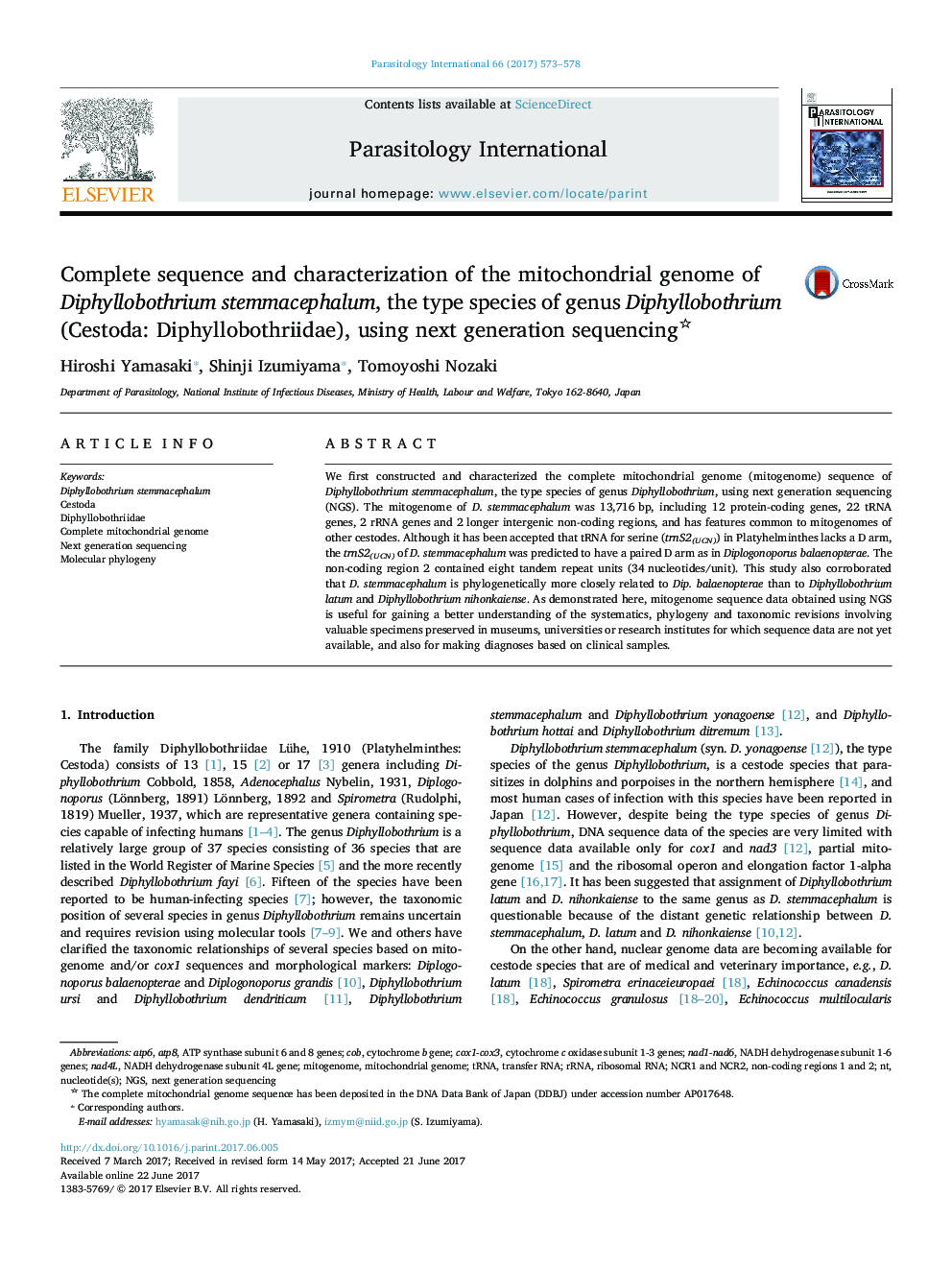| Article ID | Journal | Published Year | Pages | File Type |
|---|---|---|---|---|
| 5674209 | Parasitology International | 2017 | 6 Pages |
â¢Complete mitogenome sequence of D. stemmacephalum was first determined using NGS.â¢Secondary structure of trnS2(UCN) was predicted to have a D arm in this species.â¢D. stemmacephalum was phylogenetically closely related to Dip. balaenopterae.â¢Basic data for revision of diphyllobothriid taxonomy were provided.
We first constructed and characterized the complete mitochondrial genome (mitogenome) sequence of Diphyllobothrium stemmacephalum, the type species of genus Diphyllobothrium, using next generation sequencing (NGS). The mitogenome of D. stemmacephalum was 13,716Â bp, including 12 protein-coding genes, 22 tRNA genes, 2 rRNA genes and 2 longer intergenic non-coding regions, and has features common to mitogenomes of other cestodes. Although it has been accepted that tRNA for serine (trnS2(UCN)) in Platyhelminthes lacks a D arm, the trnS2(UCN) of D. stemmacephalum was predicted to have a paired D arm as in Diplogonoporus balaenopterae. The non-coding region 2 contained eight tandem repeat units (34Â nucleotides/unit). This study also corroborated that D. stemmacephalum is phylogenetically more closely related to Dip. balaenopterae than to Diphyllobothrium latum and Diphyllobothrium nihonkaiense. As demonstrated here, mitogenome sequence data obtained using NGS is useful for gaining a better understanding of the systematics, phylogeny and taxonomic revisions involving valuable specimens preserved in museums, universities or research institutes for which sequence data are not yet available, and also for making diagnoses based on clinical samples.
Graphical abstractDownload high-res image (171KB)Download full-size image
